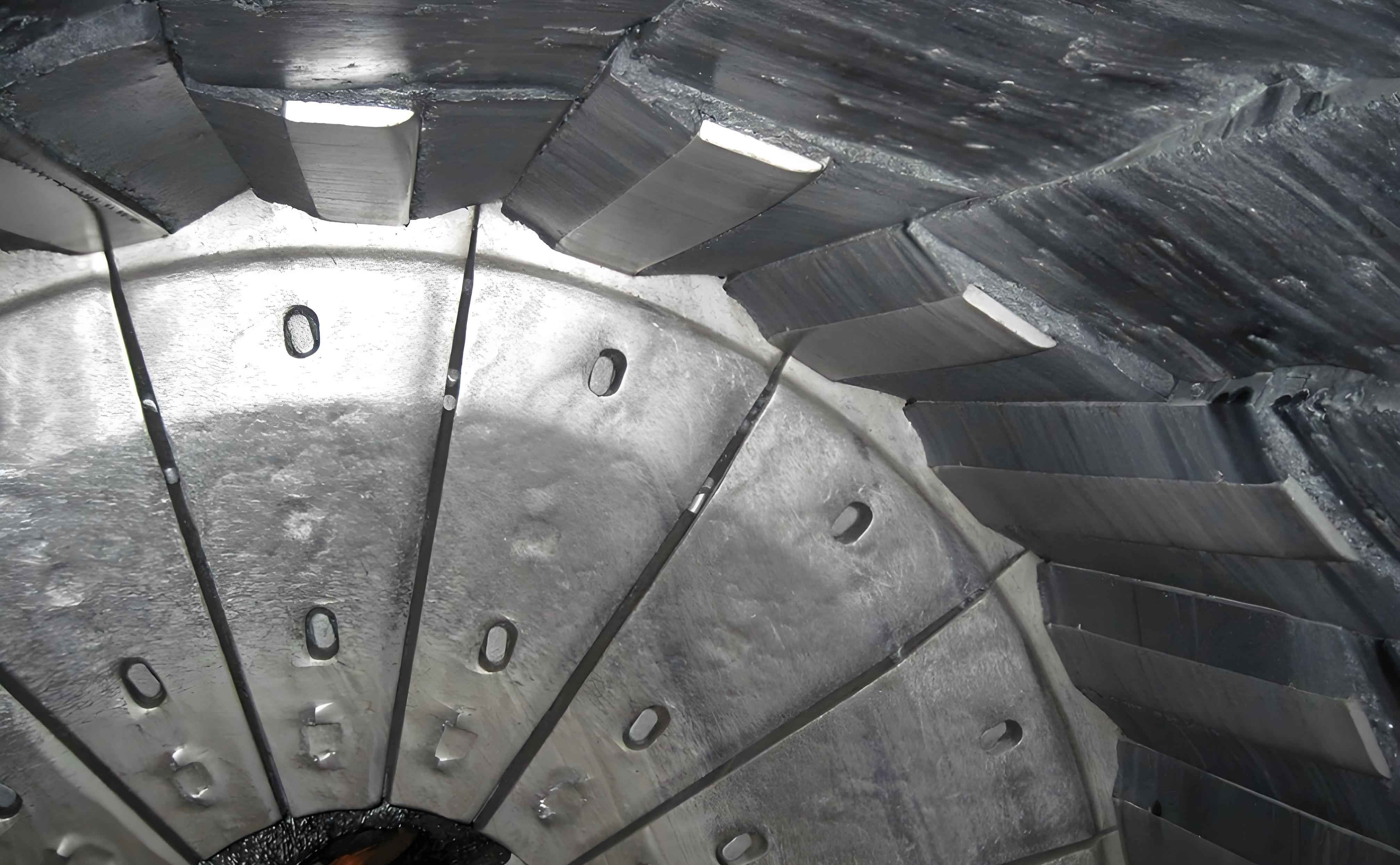1. Introduction
Semi-autogenous grinding (SAG) mills are pivotal in mineral processing, yet their high energy consumption remains a critical challenge. The lining plate, a core component of SAG mills, not only protects the mill shell but also transmits energy to grinding media and ore particles. However, wear of the lining plate significantly alters the motion dynamics of grinding media, impacting grinding efficiency and energy utilization. This study employs the Discrete Element Method (DEM) to simulate the wear evolution of lining plates over their lifecycle (0–2,800 hours) and quantifies its effects on particle kinematics, energy dissipation, and collision dynamics.

2. Theoretical Background
2.1 Principles of Discrete Element Method (DEM)
DEM simulates granular systems by resolving interactions between individual particles. For spherical particles in a SAG mill, motion equations include translational and rotational dynamics:mdvdt=mg+∑Fcmdtdv=mg+∑FcIdωdt=∑TcIdtdω=∑Tc
where mm and II are particle mass and inertia, vv and ωω are translational and angular velocities, FcFc and TcTc are contact forces and torques. Collision forces are modeled using linear spring-dashpot systems:Fc=Fn+Ft=(−knδn−ηnvn)n+(−ktδt−ηtvt)tFc=Fn+Ft=(−knδn−ηnvn)n+(−ktδt−ηtvt)t
Coulomb friction governs tangential forces when ∣Ft∣>μ∣Fn∣∣Ft∣>μ∣Fn∣.
2.2 Power Calculation Model
Mill power consumption is derived from collision forces between particles and the lining plate:P=2πnTcP=2πnTc
where nn is mill speed, and TcTc is torque from particle-liner interactions.
3. Methodology
3.1 Lining Plate Wear Modeling
The lining plate wear profile was reconstructed using wear rate curves. Wear depths at 700, 1,400, 2,100, and 2,800 hours were calculated, and 2D contours were generated.
Table 1: Wear Rate Distribution Across Lining Plate Sections
| Section (Width, m) | Wear Rate (mm/h) |
|---|---|
| 0–0.038 | 15 |
| 0.038–0.212 | 35 |
| 0.212–0.250 | 40 |
| 0.250–0.500 | 10 |
3.2 DEM Simulation Setup
A 9.60 m × 4.88 m SAG mill was modeled with periodic boundary conditions. Key parameters include:
Table 2: DEM Simulation Parameters
| Parameter | Value |
|---|---|
| Mill speed | 10.5 rpm |
| Grinding media fill rate | 15% |
| Ore fill rate | 20% |
| Ore density | 4,500 kg/m³ |
| Steel ball density | 7,800 kg/m³ |
| Coefficient of restitution (ore-ore) | 0.3 |
4. Results and Analysis
4.1 Particle Motion States
The lining plate wear significantly alters particle trajectories. As wear progresses (0→2,800 h):
- Maximum particle height decreases by 18%.
- Throwing distance reduces by 22%.
- Inertial zone area peaks at 700 h.
Table 3: Key Position Angles in the Mill
| Position | 0 h | 2,800 h | Change |
|---|---|---|---|
| Head angle (°) | 61.4 | 55.3 | -6.1 |
| Shoulder angle (°) | 82.9 | 71.0 | -11.9 |
| Toe angle (°) | 195.5 | 206.1 | +10.6 |
4.2 Energy Dissipation and Collision Dynamics
- Effective collisions (ore-ore, ore-ball) dominate energy utilization.
- Ineffective collisions (ball-ball, ball-liner) decrease with lining plate wear.
Table 4: Cumulative Power Distribution by Collision Type
| Collision Type | 0 h (kW) | 2,800 h (kW) | Trend |
|---|---|---|---|
| Ore-Ore | 25,632 | 26,806 | ↑3.7% |
| Ore-Ball | 24,597 | 25,334 | ↑2.9% |
| Ball-Ball | 5,255 | 5,128 | ↓2.4% |
| Ball-Liner | 283 | 139 | ↓50.9% |
4.3 Impact of Lining Plate Wear on Power Consumption
Mill power increases by 6.2% over 2,800 hours due to altered torque from particle-liner interactions.
5. Discussion
5.1 Lining Plate Wear and Grinding Efficiency
- Early-stage wear (0–700 h): High impact forces accelerate lining plate degradation.
- Mid-to-late wear (>1,400 h): Reduced direct collisions prolong lining plate lifespan but lower grinding intensity.
5.2 Optimization Strategies
- Adjust mill speed and fill rates dynamically to compensate for reduced particle lifting capacity.
- Use adaptive lining plate designs to balance wear and energy efficiency.
6. Conclusion
- Lining plate wear reduces particle lifting height and throwing distance, altering collision dynamics.
- Effective collision energy increases marginally (+3.8%), while ineffective collisions decrease (-4.9%).
- Mill power consumption rises with wear, necessitating operational adjustments.
- Adaptive lining plate management enhances grinding efficiency and reduces energy costs.
